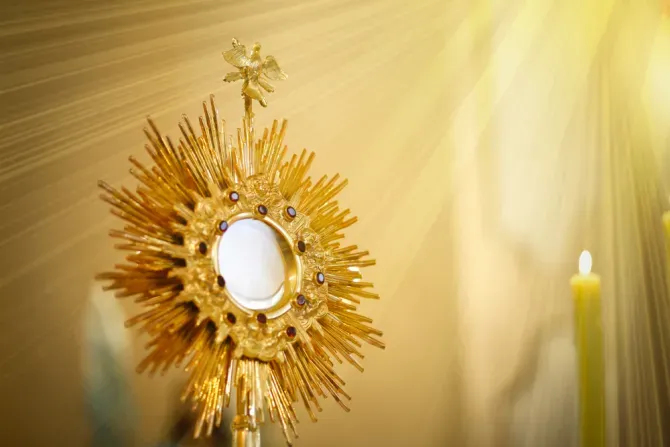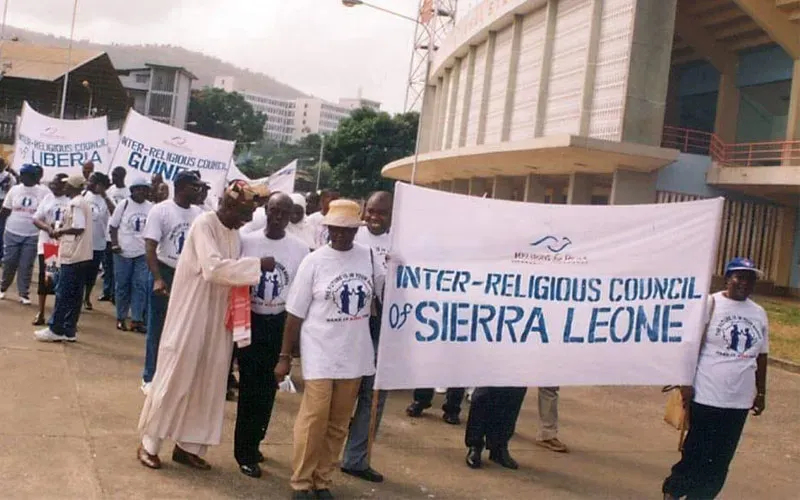Sotelo put the corporal in a plastic bag with a hermetic seal, kept it in his rectory, and handed it over to Bishop Guillén two days later.
Guillén was particularly skeptical and decided to keep it in his personal chapel while he decided what to do. “I’m not that prone to naively believing in things. Logic makes us prudent in terms of believing things without sifting through them and without analyzing them,” he told “EWTN Noticias.”
Almost three months later, the bishop ordered some scientific tests to be carried out at the Santa Rosa de Copán Medical Center, about 30 miles from Gracias, to evaluate the oxidation and dilution of the apparent blood.
Concluding that the necessary material was not available to carry out an analysis, the corporal was sent to the DISA Test toxicological center in Tegucigalpa, where Dr. Héctor Díaz del Valle, who holds a doctorate in chemistry and pharmacy, led the investigation.
At the end of October 2022, the analysis began with the participation of an outside forensic expert and Dr. Claudia Coca, an evangelical professor who works on the faculty of chemistry and pharmacy of the National Autonomous University of Honduras and who was previously head of the laboratory of the Police Directorate of Investigations (DPI).
(Story continues below)
The same blood type on the Shroud of Turin and Lanciano
Initially, it was ruled out that the stains were of wood resin or animal blood. Subsequent procedures revealed that the blood was human and was type AB with a positive Rh factor, the same as the eucharistic miracle of Lanciano, Italy, as well as that found on the Shroud of Turin, also in Italy.
According to the World Population Review portal in Honduras, less than 2.5% of the population in that country has that same blood type.
The expert tests also ruled out that the pattern of the blood stains could have been made artificially.
Valle was surprised because the cloth “had contact with air, humidity; presumptive tests were carried out on the cloth and it did not dry properly” and yet to date “it does not show deterioration or fungus.”
In forensic investigations, presumptive and confirmatory tests are a useful tool in the study of blood stains.
After carrying out the investigations and putting the statements of the witnesses under notarized oath, the bishop of Gracias confirmed that it was a surprising occurrence. “I don’t place in doubt the credibility,” he said.
“I think that this extraordinary, visible, tangible, perceptible, verifiable sign of this manifestation of the blood of the Lord in an obscure community in the midst of the most extreme rurality of our agricultural environment says a lot at this time,” he said.
“You have to think that God seeks extremes to call us to the balance of good sense and truth. It seems to me that this is an extreme sign of God who manifests himself again, as he has done in the holy Scriptures, in the history of salvation, by those simple ones whom Mary praises for their lowliness,” the bishop said.
‘A call to conversion’
Regarding the possible reason for the miracle, the bishop allowed himself to intuit that “God loves the marginal, the hidden, the simple. In an obscure village, without any social relevance, far from the urban area, the Lord chooses to manifest himself.”
In his opinion, what happened is a “miracle of synodality,” since the Lord did not decide to show himself to a bishop, a priest, or a religious but to a layperson.
“It’s the time of the laity,” he said. “It is the faith of the laity that has kept alive the vitality of the Church in these corners of the world. For me and for the clergy of the diocese it has been a call to conversion to recognize the call of God in the voice of the laity.”
For now, both the priests of the diocese and Guillén have made an effort to be prudent. They have disseminated information to the faithful about what a eucharistic miracle is, but they have not yet invited the faithful to venerate the blood-stained corporal, which has not been exposed to the faithful.
Although the bishop has recognized that it is a eucharistic miracle, at the request of the apostolic nuncio in Honduras, Archbishop Gábor Pintér, the scientific evidence and the notarized oaths of the witnesses were collected and sent to the Vatican for further investigation.
For Father Sotelo, God manifested himself in a poor community because that is how the Lord grew up: “The Lord has a preference for the vulnerable,” he stressed.
He trusts that with the eucharistic miracle, the “community will grow in love for the Eucharist, in adoration of the Blessed Sacrament, and that it will grow in fraternity. From San Juan Intibucá, a light for Honduras and the whole world.”
Father Rodríguez stressed that “proof that Jesus is with us is the manifestation of this miracle, which is the blood of Christ that wishes to wash us and lighten our load.”
In the history of the Church, more than 100 eucharistic miracles have been recorded. Of these, at least four had taken place in Latin American countries. Gracias, Honduras, would be the fifth.
Watch the full “EWTN Noticias” story about the alleged eucharistic miracle below (in Spanish).
This story was first published by ACI Prensa, CNA’s Spanish-language news partner. It has been translated and adapted by CNA.








